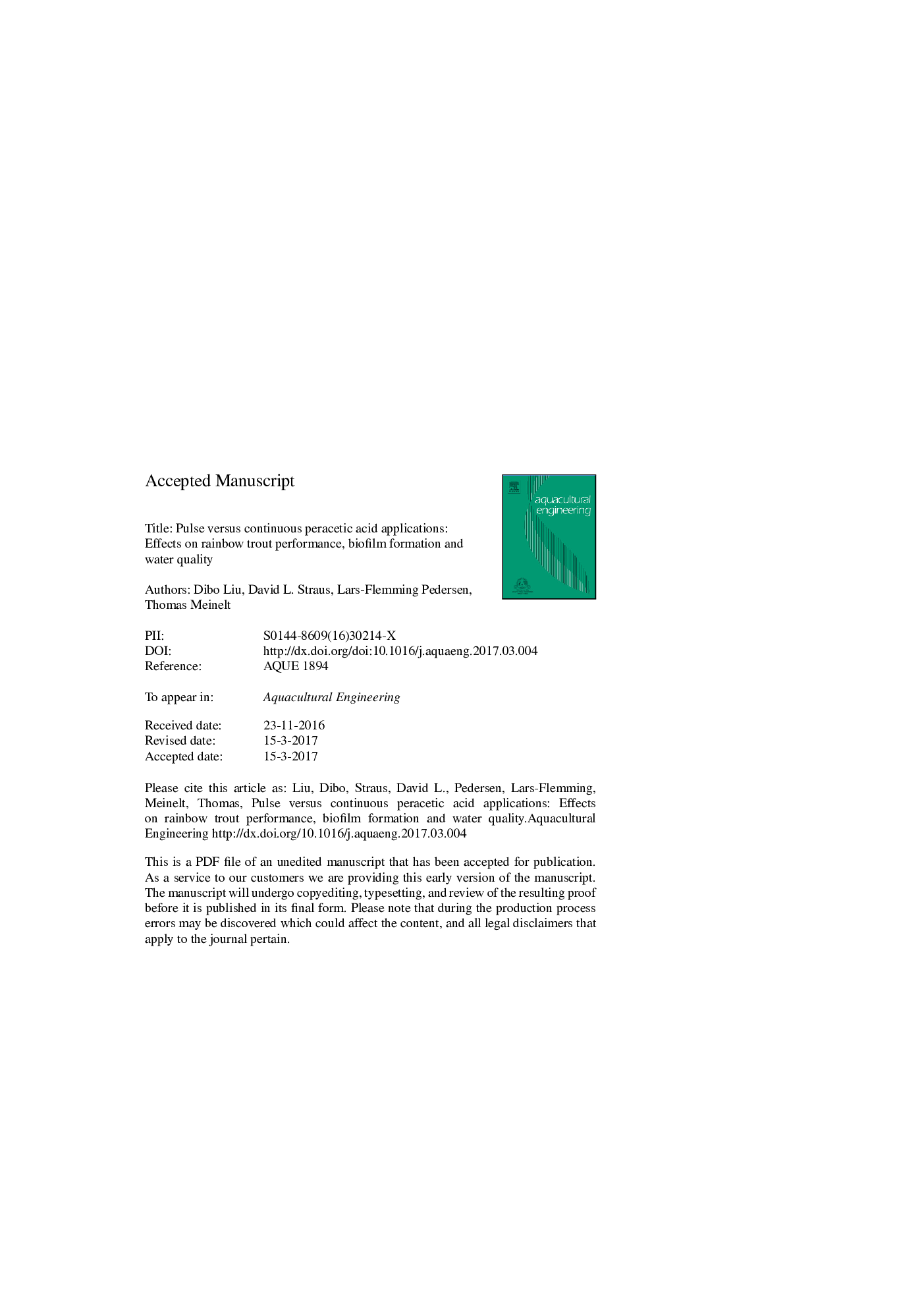| Article ID | Journal | Published Year | Pages | File Type |
|---|---|---|---|---|
| 5763939 | Aquacultural Engineering | 2017 | 38 Pages |
Abstract
Peracetic acid (PAA) products are being introduced to aquaculture as sustainable disinfectants. Two strategies are used to apply PAA: high dose pulse applications, or low dose continuous application. In the present study, their impacts on fish health and water quality were investigated in triplicate flow-through tanks stocked with rainbow trout. The gentler and shorter water cortisol increase measured along twice-per-week pulse applications of 1 mg Lâ1 PAA indicated a progressive adaptation of fish. In contrast, the continuous application of 0.2 mg Lâ1 PAA caused no stress to fish. Meanwhile, no mortality and no impact on growth or innate cellular immunity were observed. The pulse applications restricted biofilm formation, and partially inhibited nitrification. Additionally, the highest oxygen concentration and stable pH were observed. In contrast, the continuous application promoted biofilm formation, and caused a pH increase and intermediate oxygen concentration. The contrast was probably due to different susceptibility of microbes to PAA-induced oxidative stress. To summarize, pulse PAA applications cause minor stress in fish, but have advantages over continuous application by ensuring better water quality.
Related Topics
Life Sciences
Agricultural and Biological Sciences
Aquatic Science
Authors
Dibo Liu, David L. Straus, Lars-Flemming Pedersen, Thomas Meinelt,
